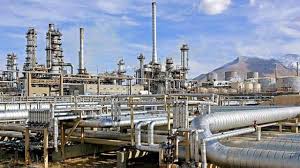
Port Harcourt Refinery Shuts Down Less Than a Month After Resumption, Despite $1.5 Billion Rehabilitation Claims

The Port Harcourt Refinery has ceased operations for the second time in less than a month after claimsof resuming production by NNPC, sparking concerns about the effectiveness of the $1.5 billion rehabilitation project.
The shutdown was reported on Thursday, December 19, 2024, as the loading of Premium Motor Spirit (PMS), commonly known as petrol, abruptly halted.
By Friday, December 13, the refinery’s 18-arm loading bay, typically bustling with activity, was eerily silent, with stranded tankers parked along access roads and inside the premises.
The Nigerian National Petroleum Company Limited (NNPCL) had heralded the refinery’s November 26 relaunch as a “landmark moment” for the country’s energy sector.
However, industry insiders and sources have since raised concerns about the refinery’s operations and the quality of the distributed products.
Some sources revealed that only the refinery’s Crude Distillation Unit (CDU) was functional. While the CDU can produce products like naphtha, kerosene, and diesel, it cannot refine components required for PMS production.
According to reports, NNPCL resorted to blending Crack C5 with naphtha from primary units to simulate PMS. Staff at the refinery warned that this unconventional approach could affect vehicle performance.
Contrary to claims by NNPCL that 200 trucks were loaded with PMS during the relaunch, fewer than 10 trucks reportedly carried petrol, which sources say was old stock from storage tanks.
However, stakeholders expressed scepticism, citing the deserted state of the refinery and questioning the accountability surrounding the costly rehabilitation project.
This marks the second reported shutdown since November, when operations were scaled back shortly after the reopening. At the time, only non-petroleum units were active.
The shutdown has reignited debates over the viability of the refinery’s rehabilitation, with many questioning whether the $1.5 billion investment was effectively utilised.
The refinery, dormant for years, was expected to spearhead Nigeria’s quest for energy self-sufficiency. Yet, the current state of operations casts doubt on the refinery’s ability to fulfil its promises.
Read Also:
- Stampedes at Palliative Distribution in Abuja and Anambra Claim Multiple Lives, Including Children
- Kenyan Petitioners Seek Over $54.5 Billion In Damages From 2 U.S Companies Over Toxic Sanitary Products
- Recent Stampedes at Palliative Venues Reflects Systemic Failures in Our Society – Obi
About The Author
Related Articles
Burned Files, Altered Laws: The Growing Pattern of Disappearing Records Under Tinubu
A fire outbreak at the headquarters of the Federal Inland Revenue Service...
ByWest Africa WeeklyDecember 21, 2025Burkina Faso Grants Broadcast Frequency to AES Radio
Burkina Faso’s Superior Council of Communication has approved the allocation of a...
ByWest Africa WeeklyDecember 19, 2025Mass Layoffs Cast Shadow Over Guinea’s Simandou Mine as Exports Begin
Guinea has begun exporting iron ore from the long delayed Simandou project,...
ByWest Africa WeeklyDecember 19, 2025Ghana Arrests Nigerians for Cybercrime
The Minister for Communications, Digital Technology and Innovation, Ghana, Hon. Samuel Nartey...
ByJoshua ChuwangDecember 17, 2025












Leave a comment